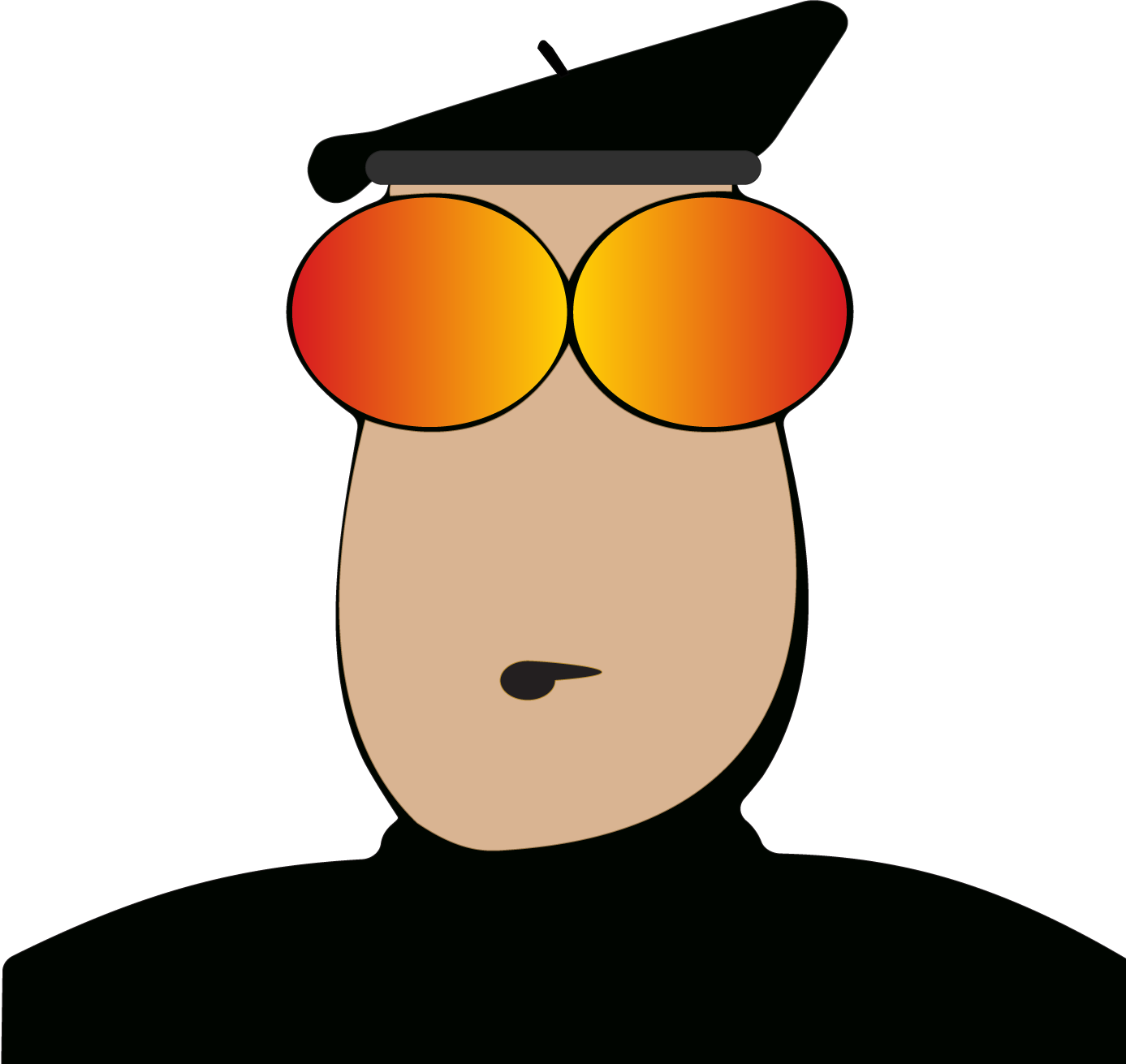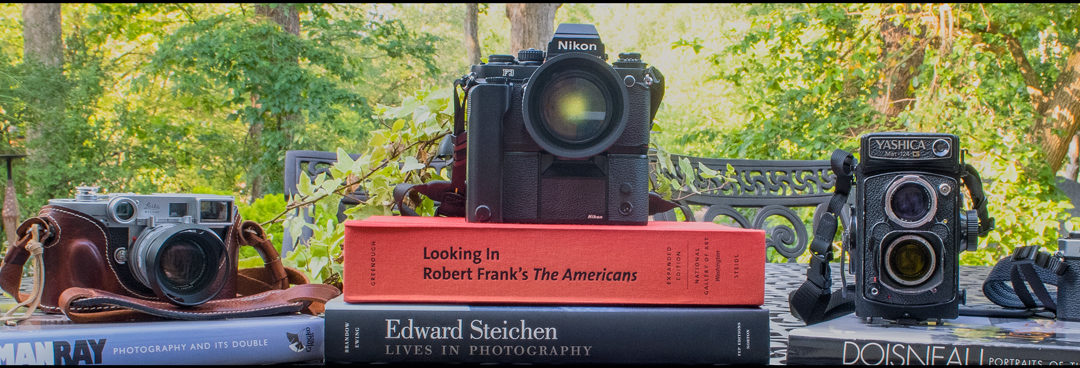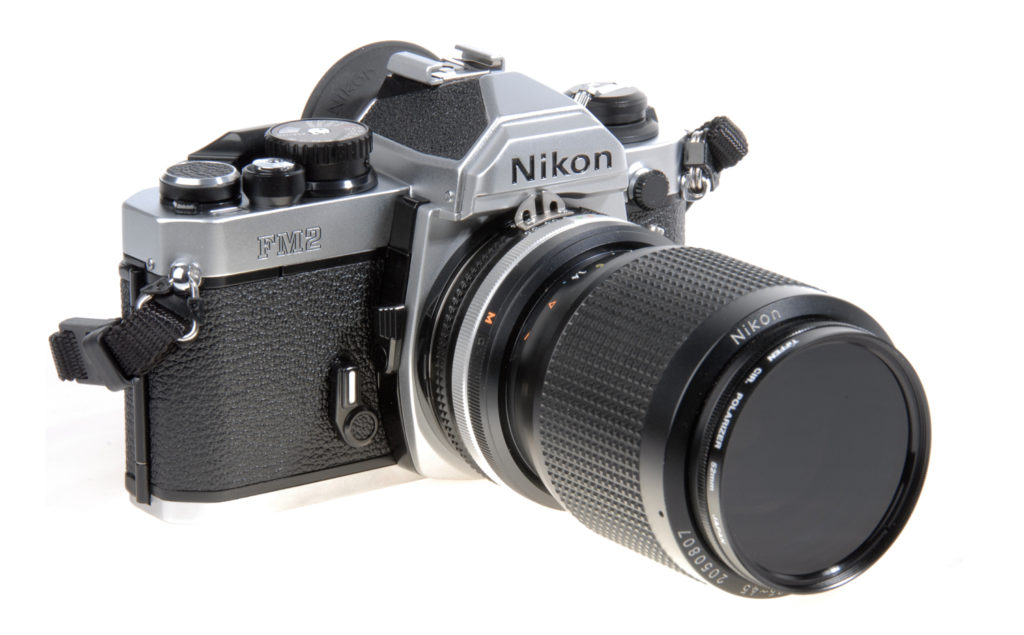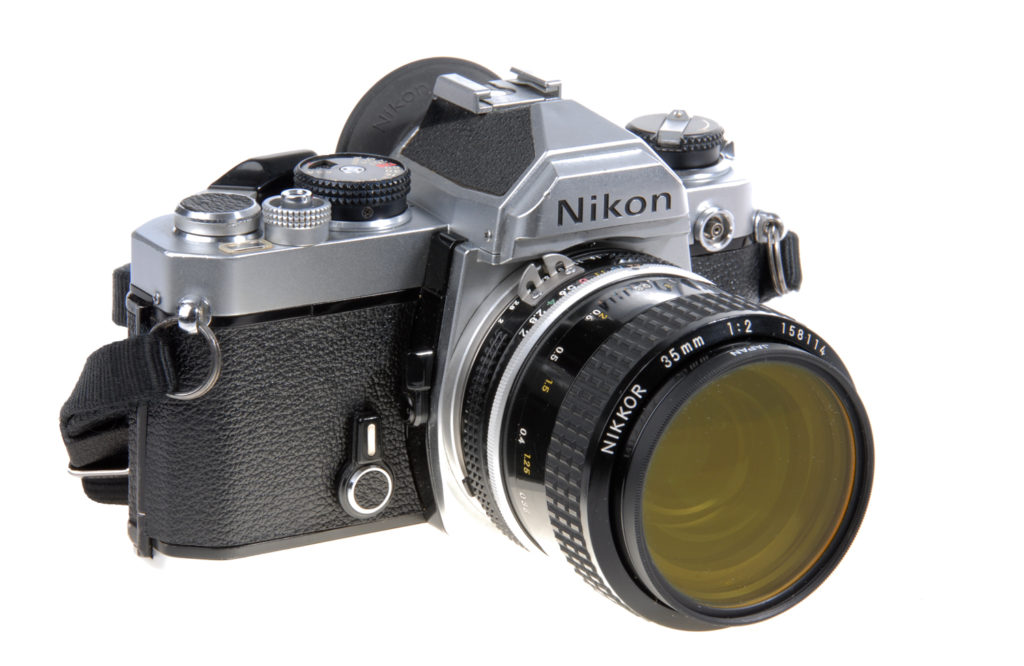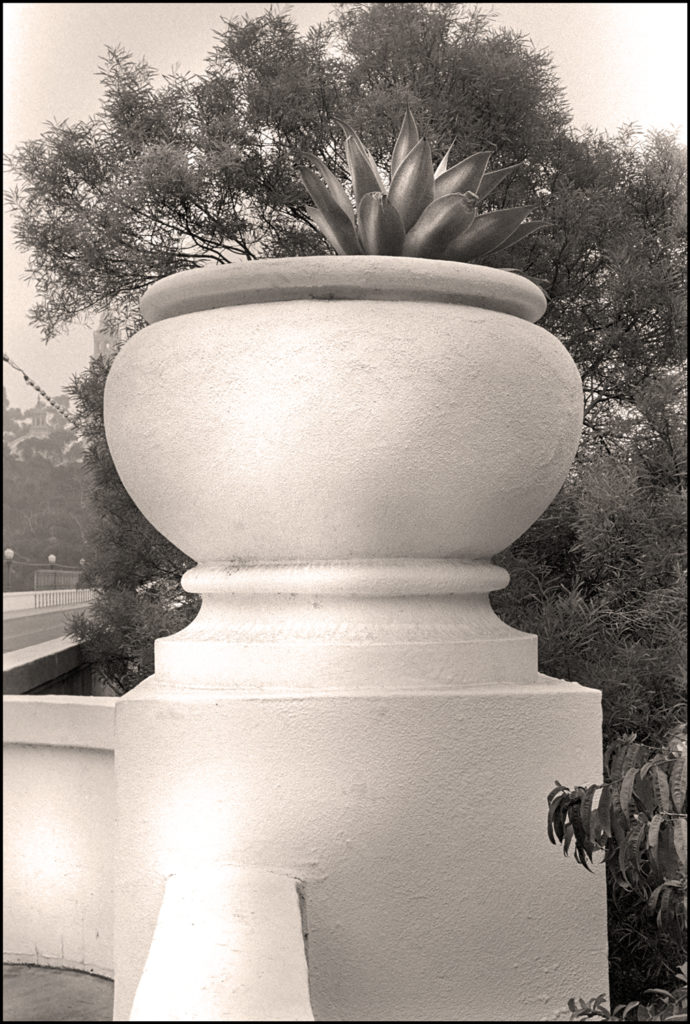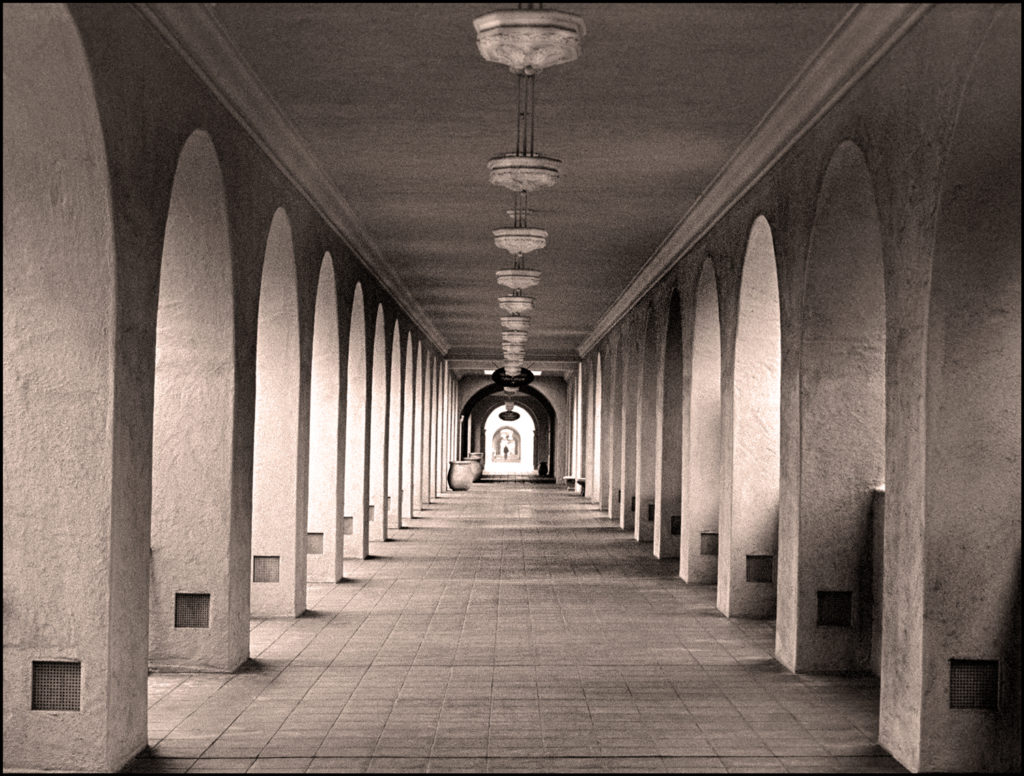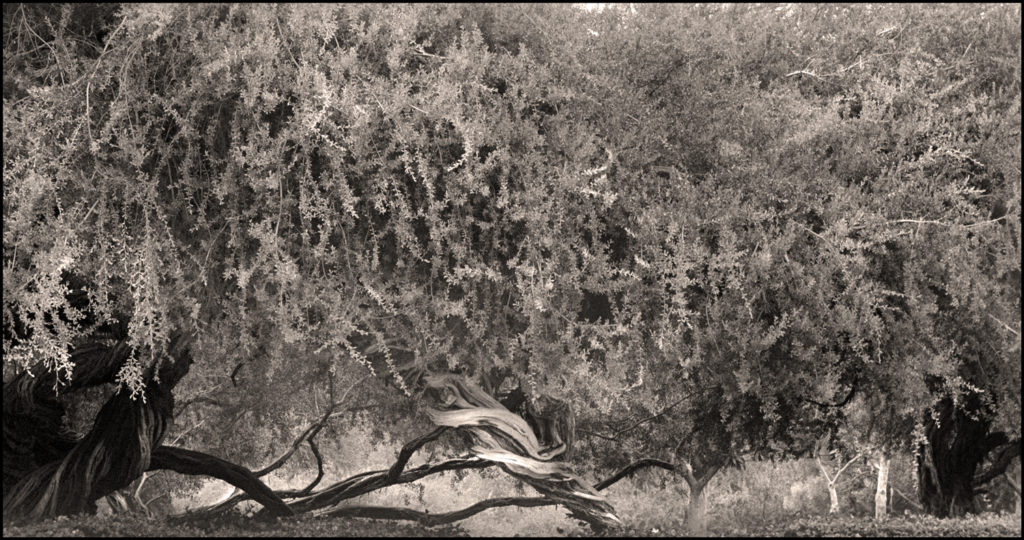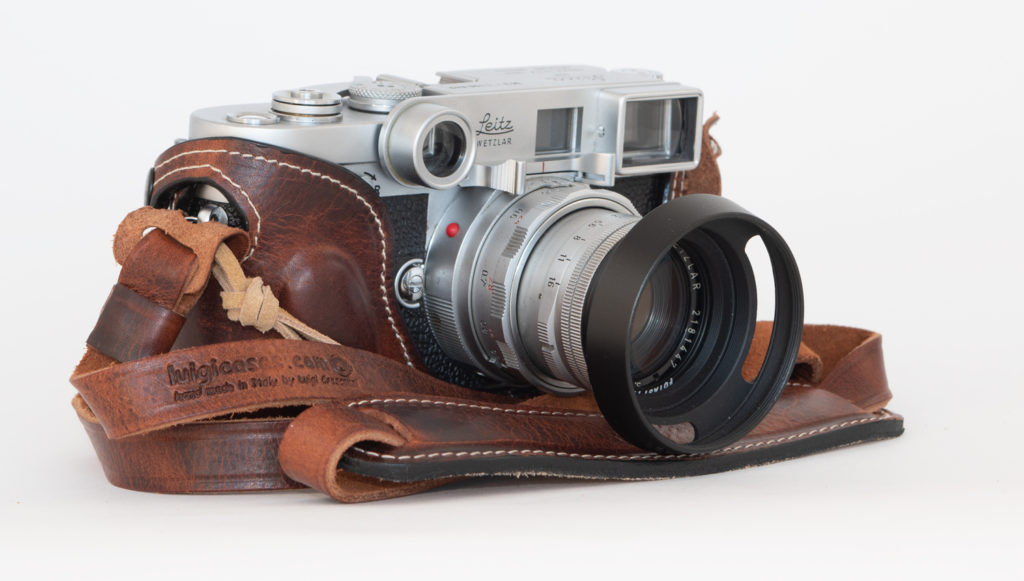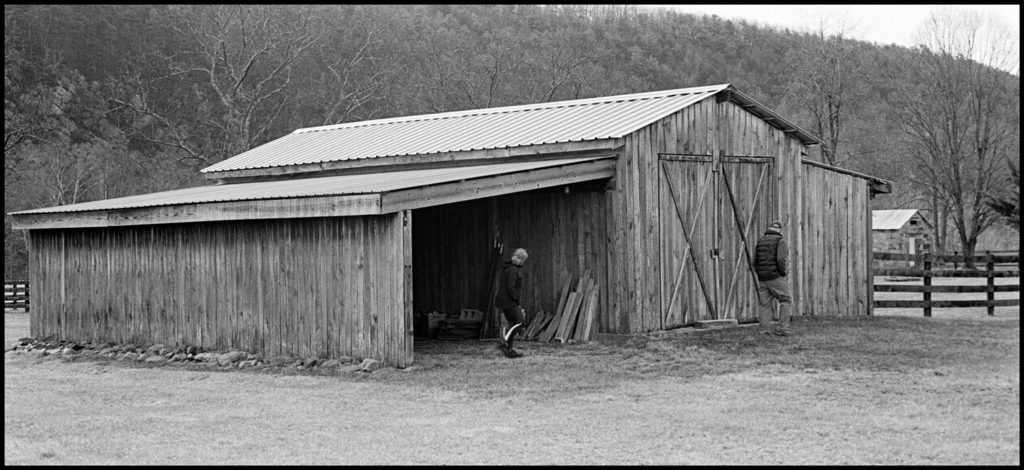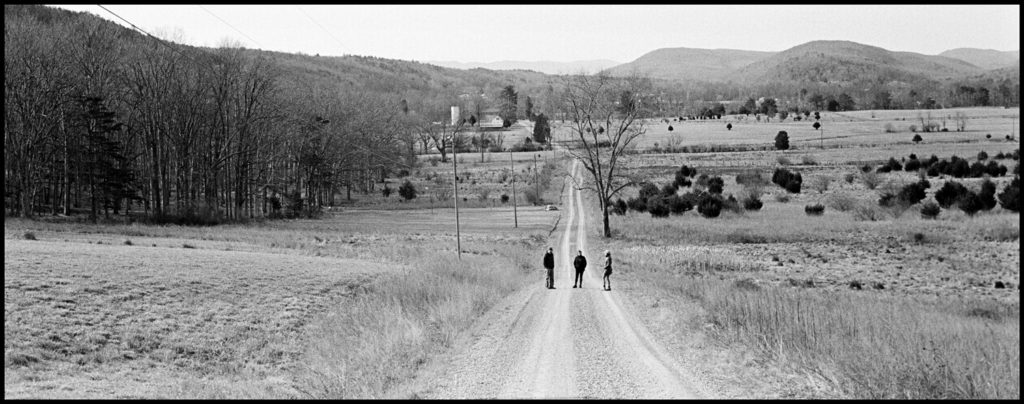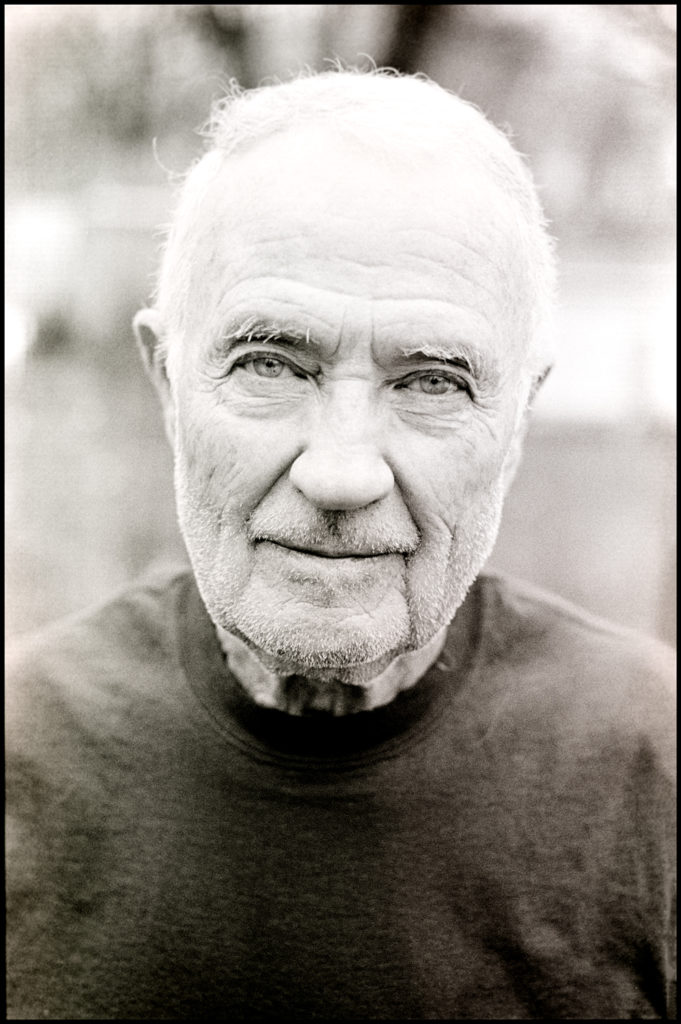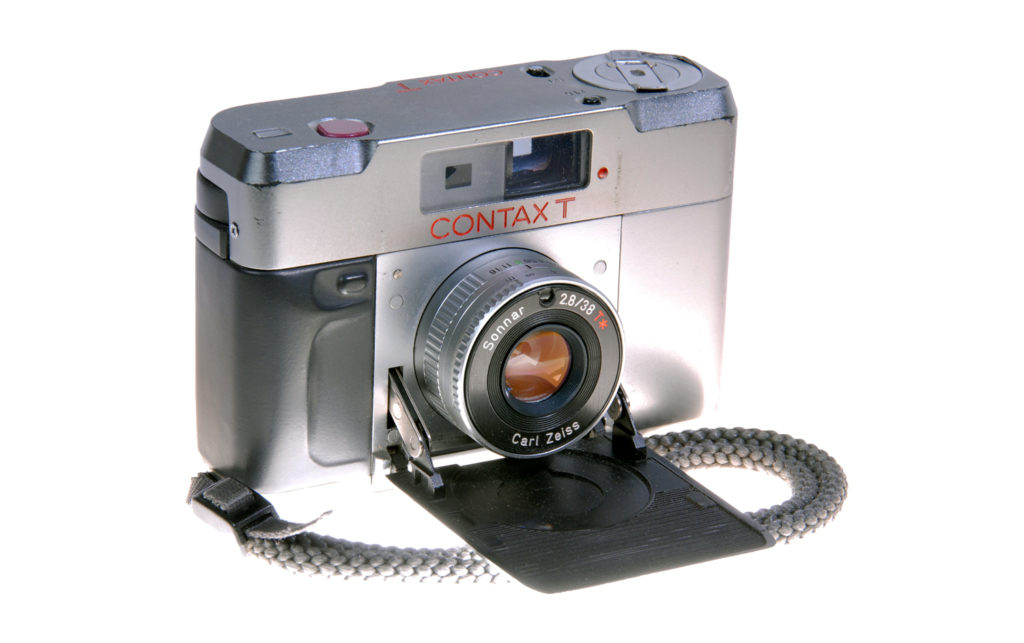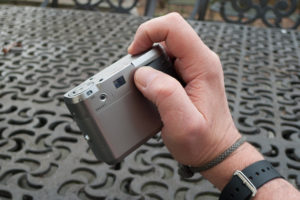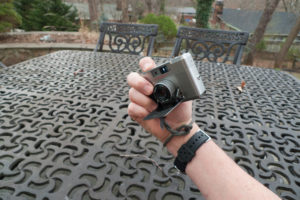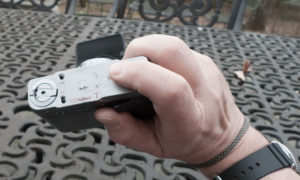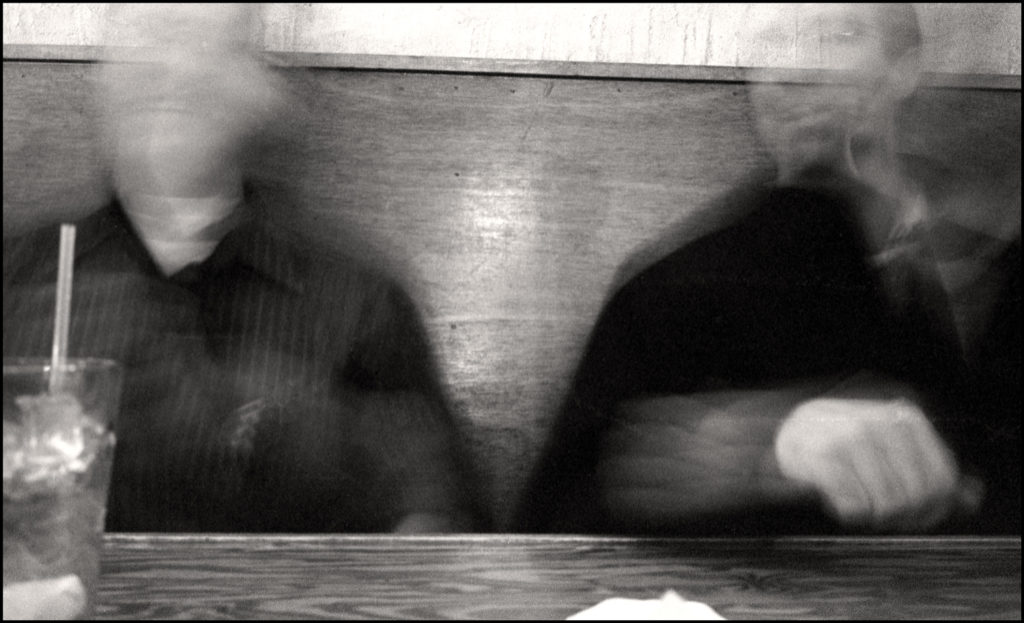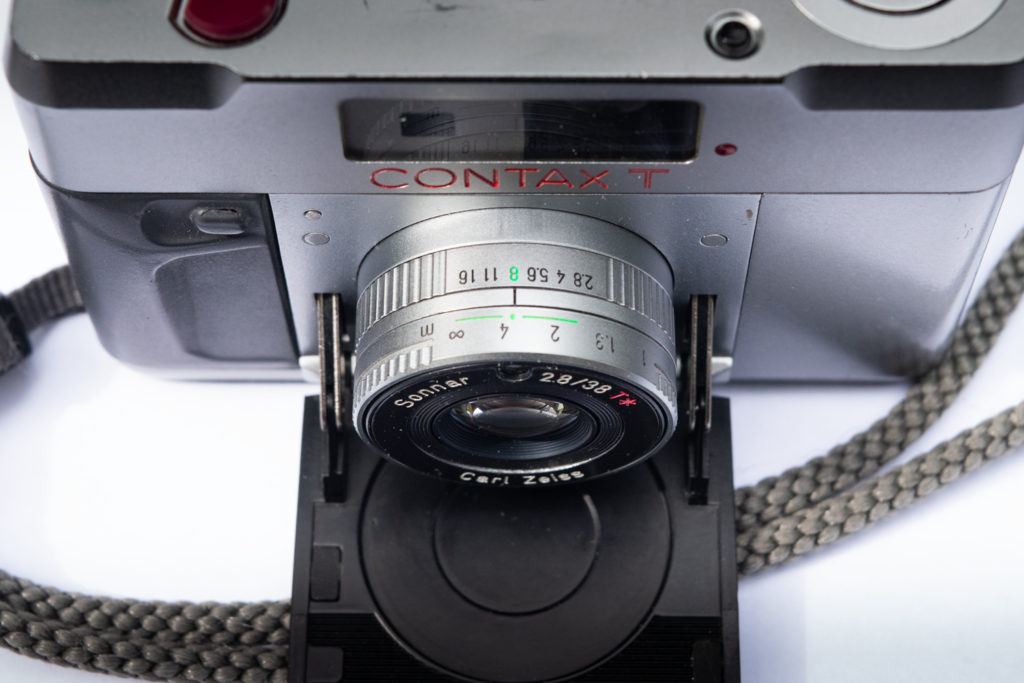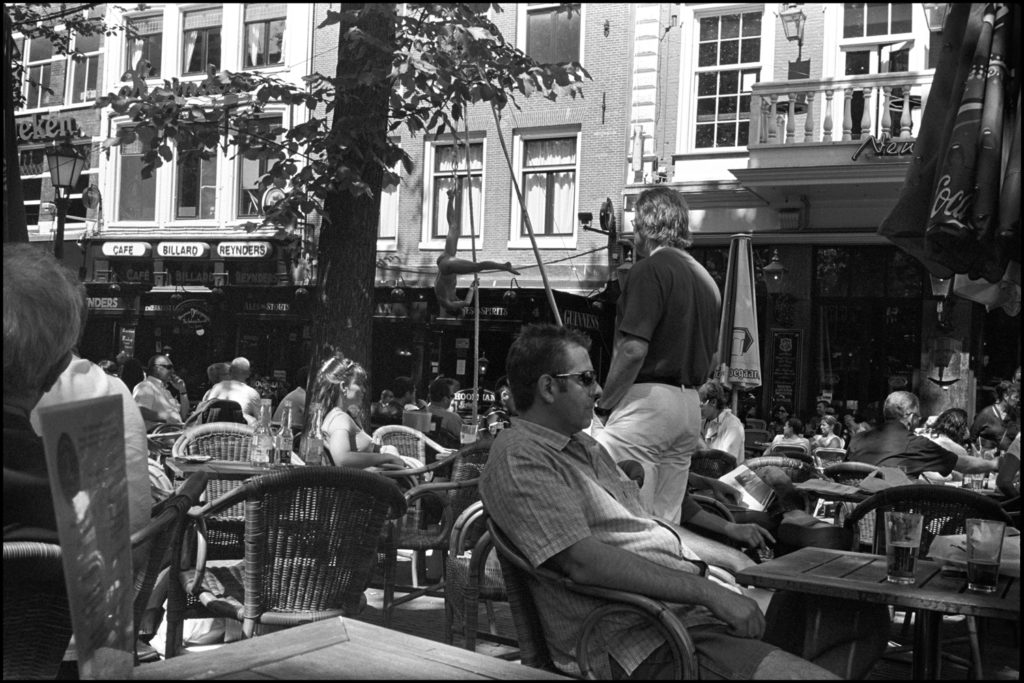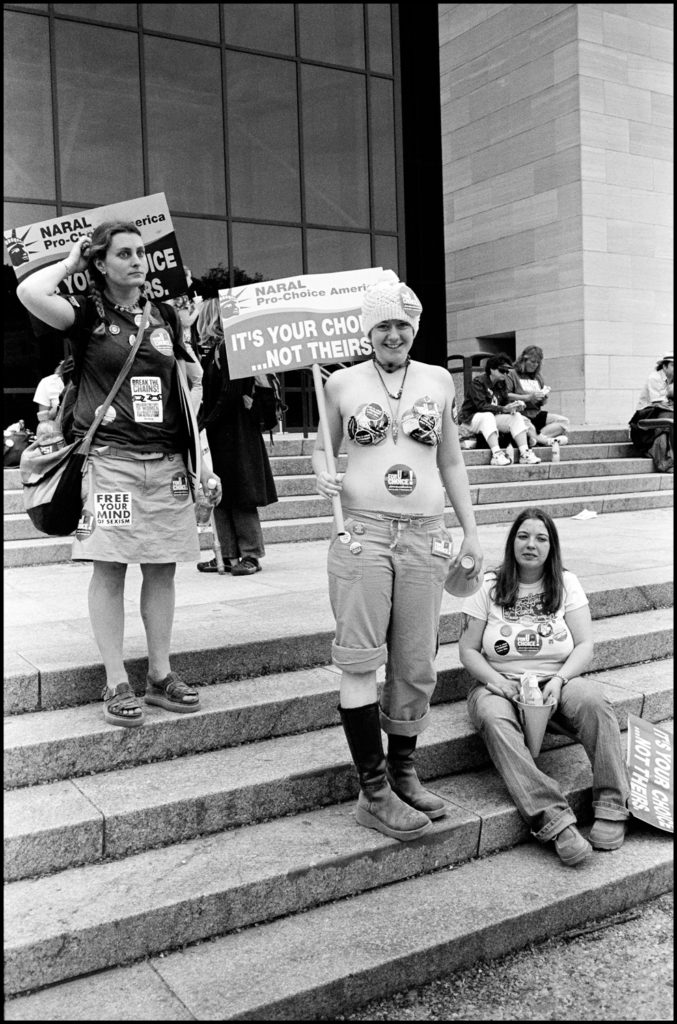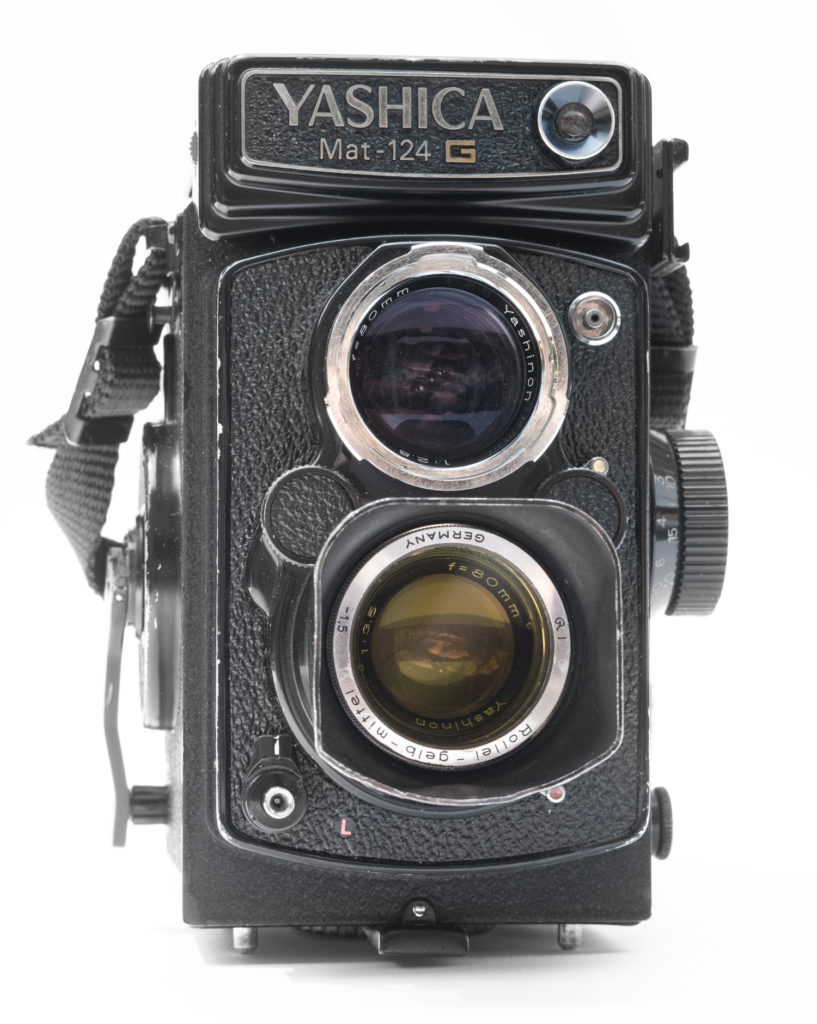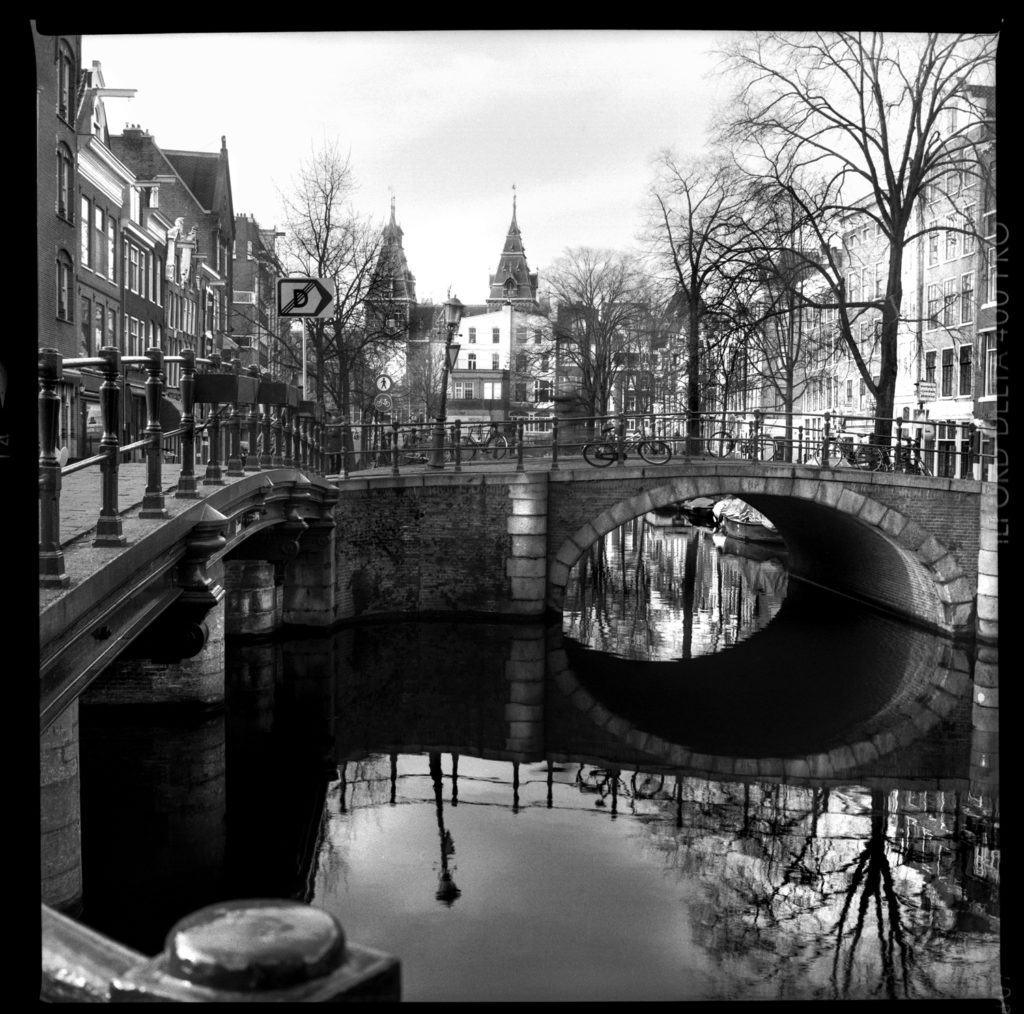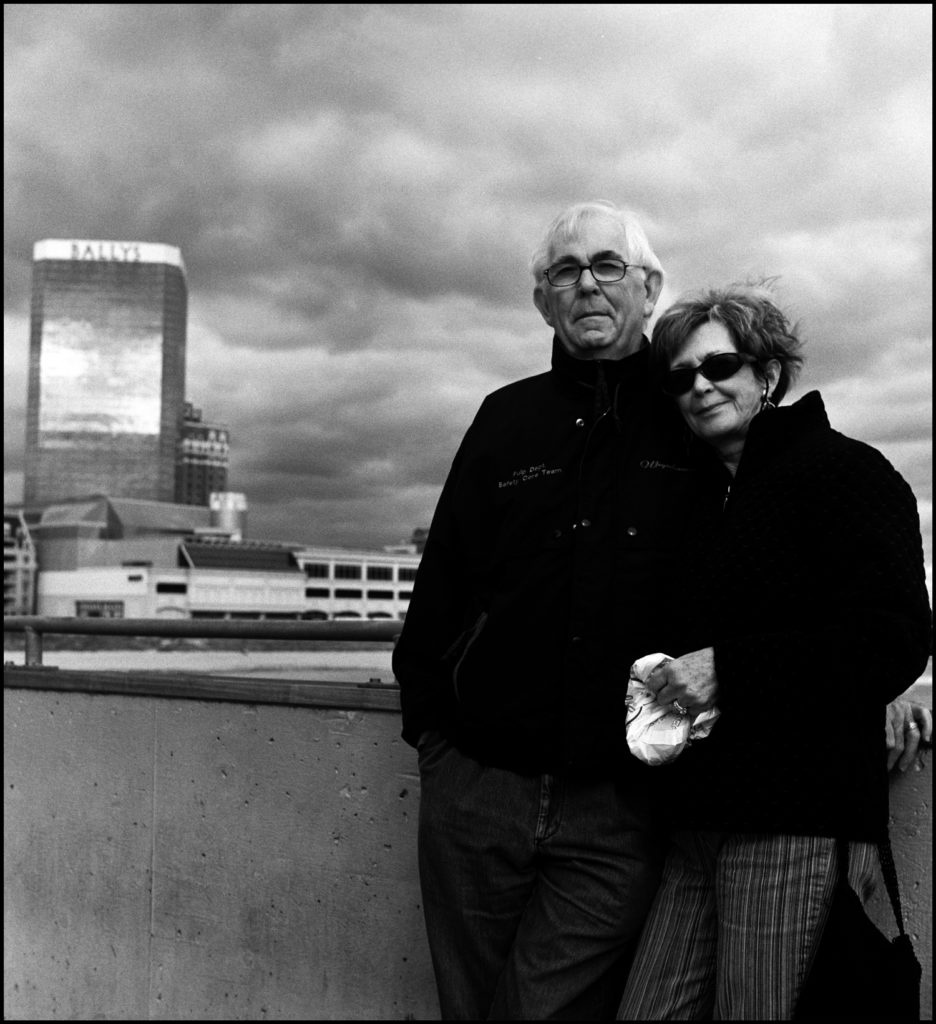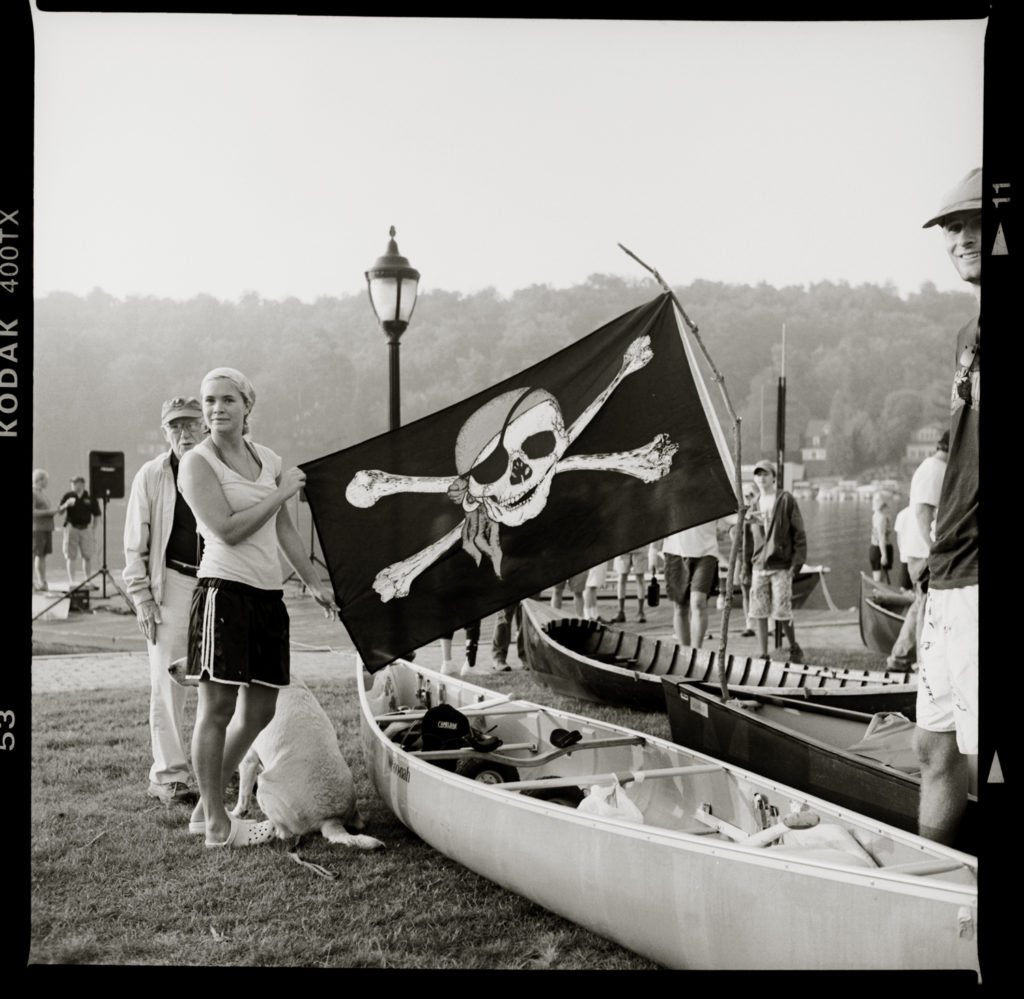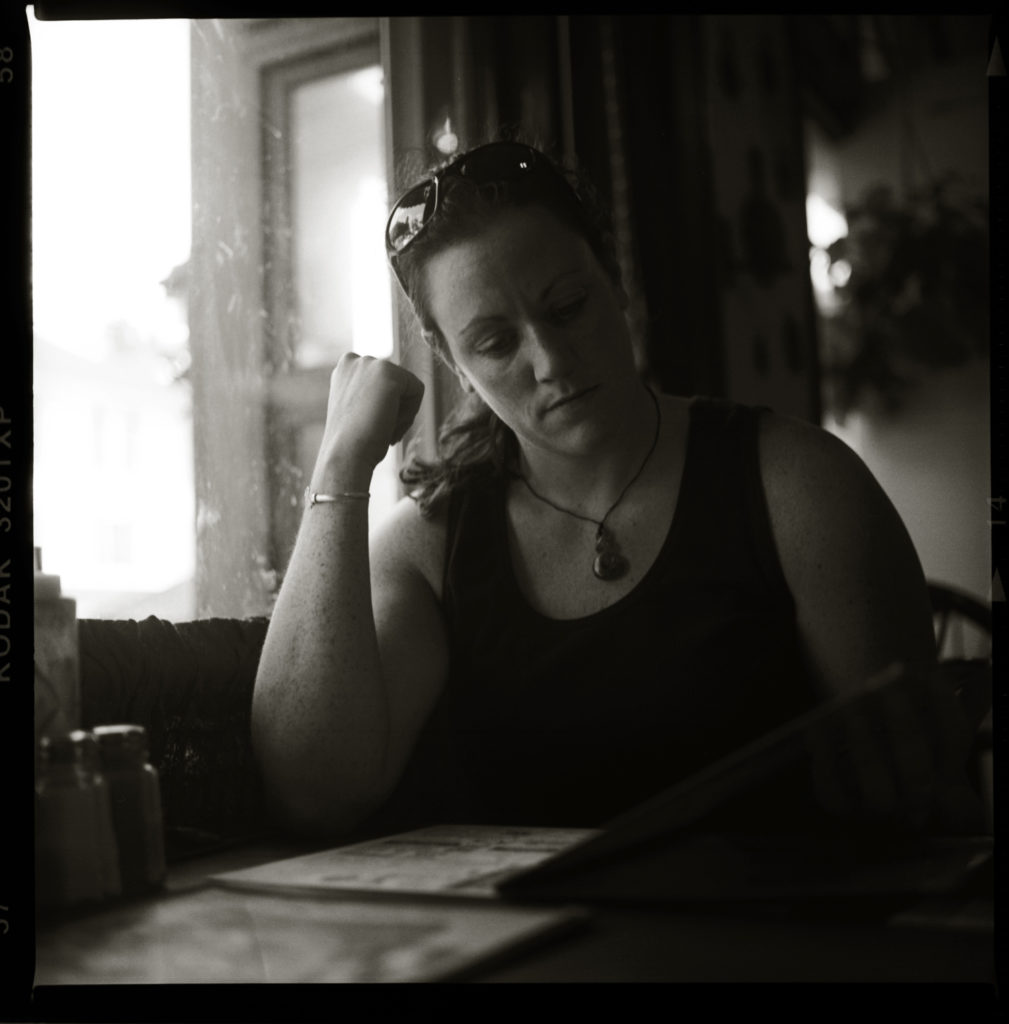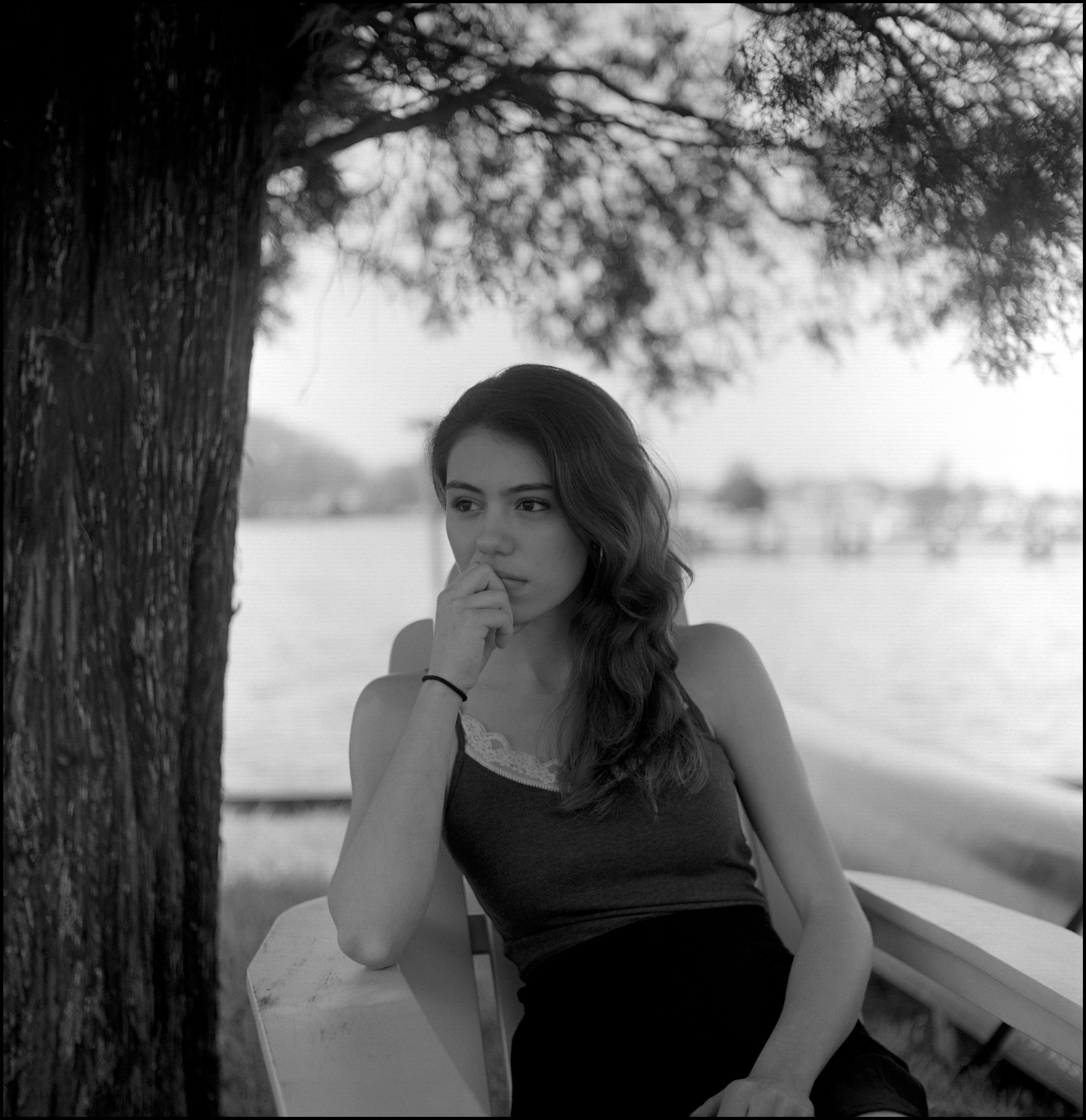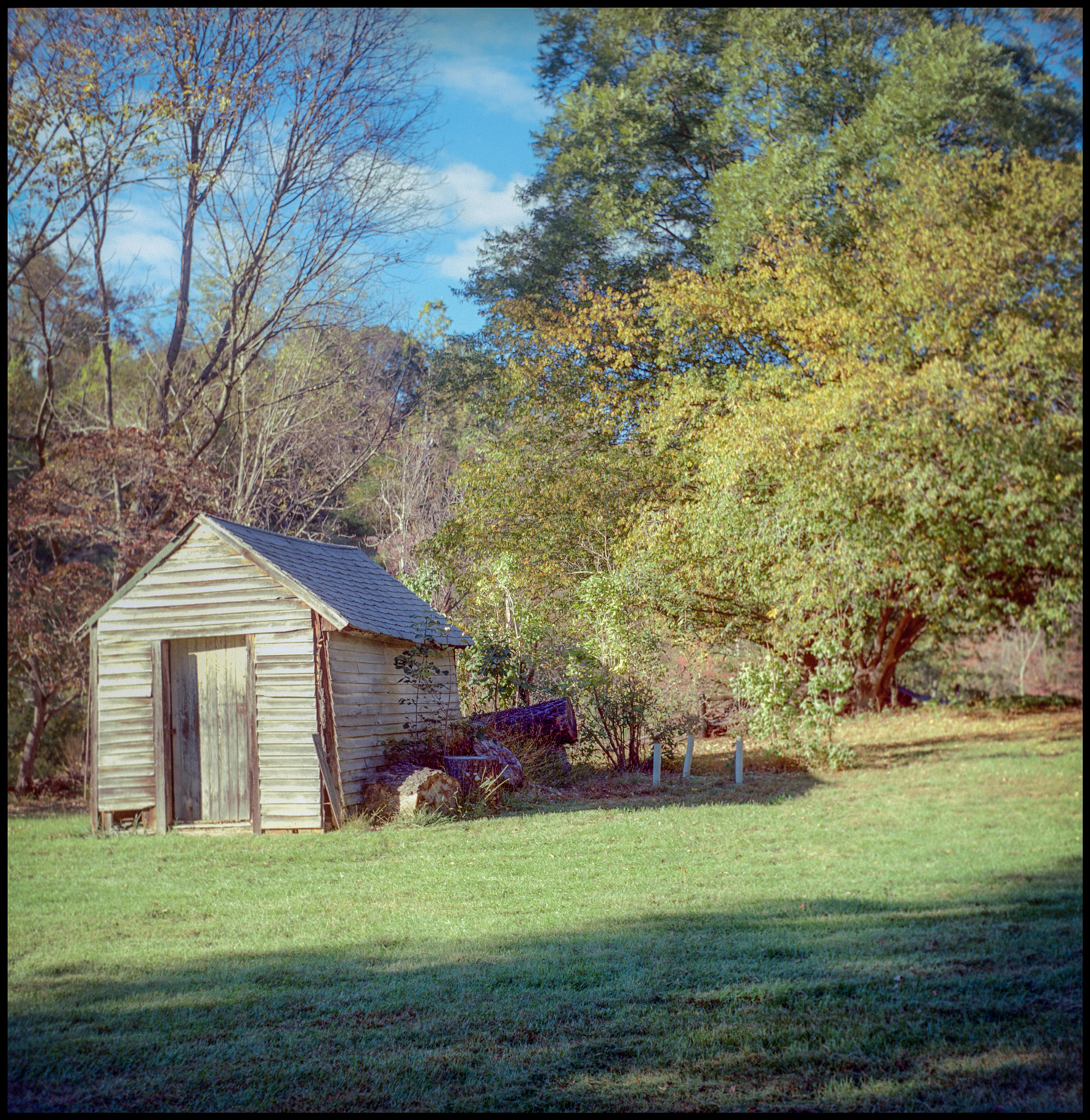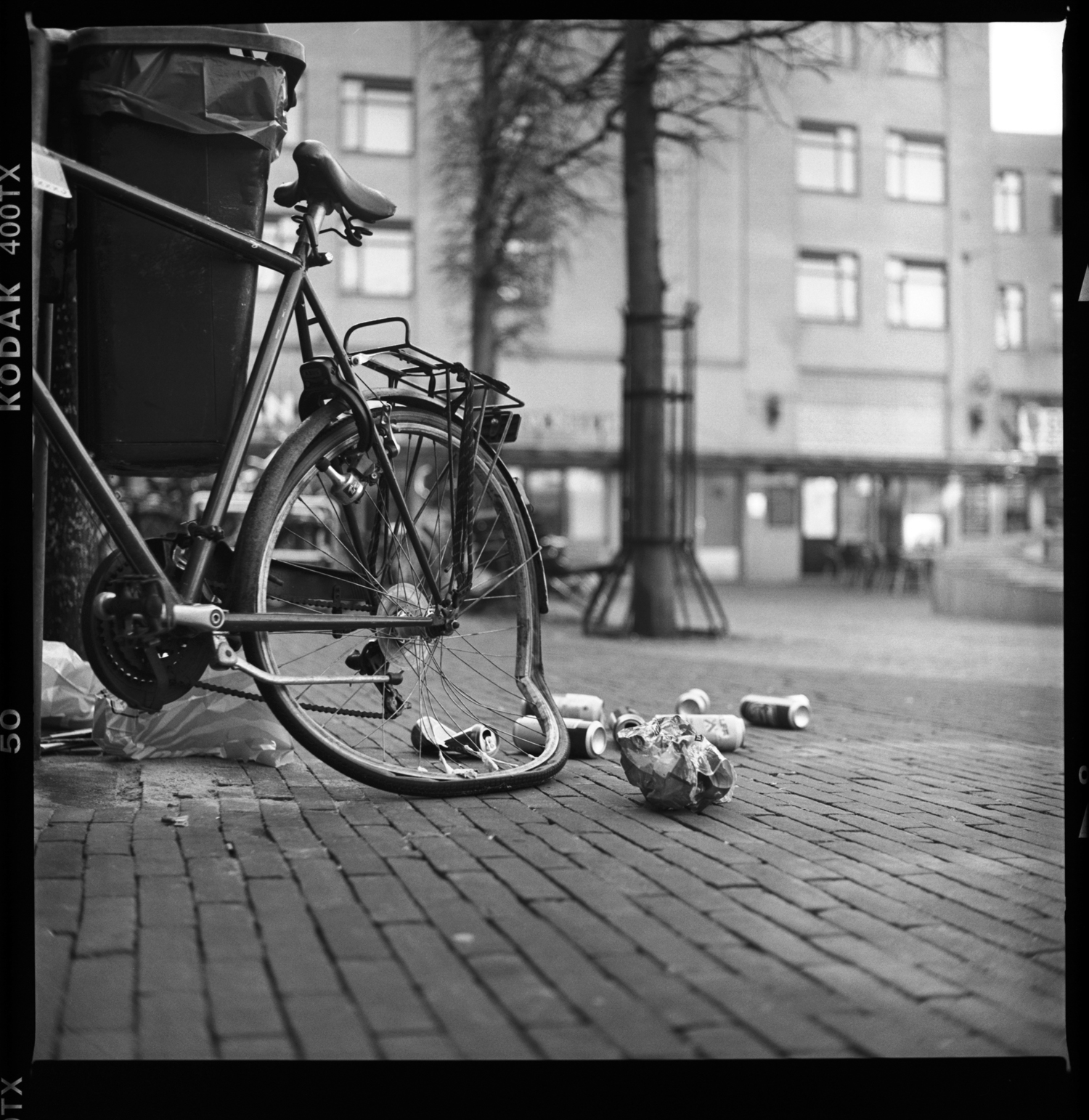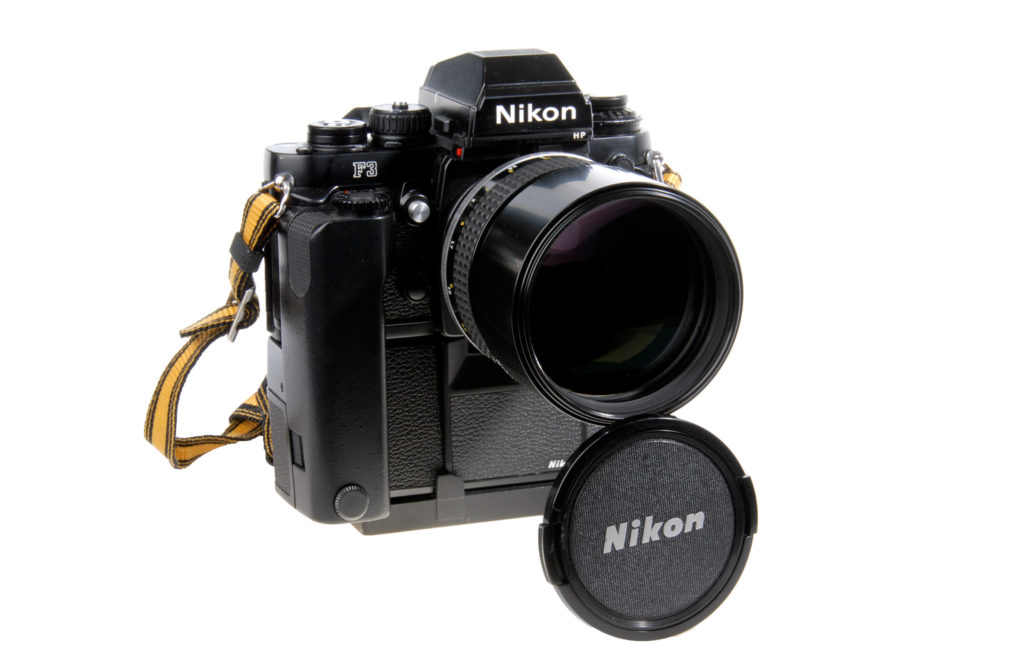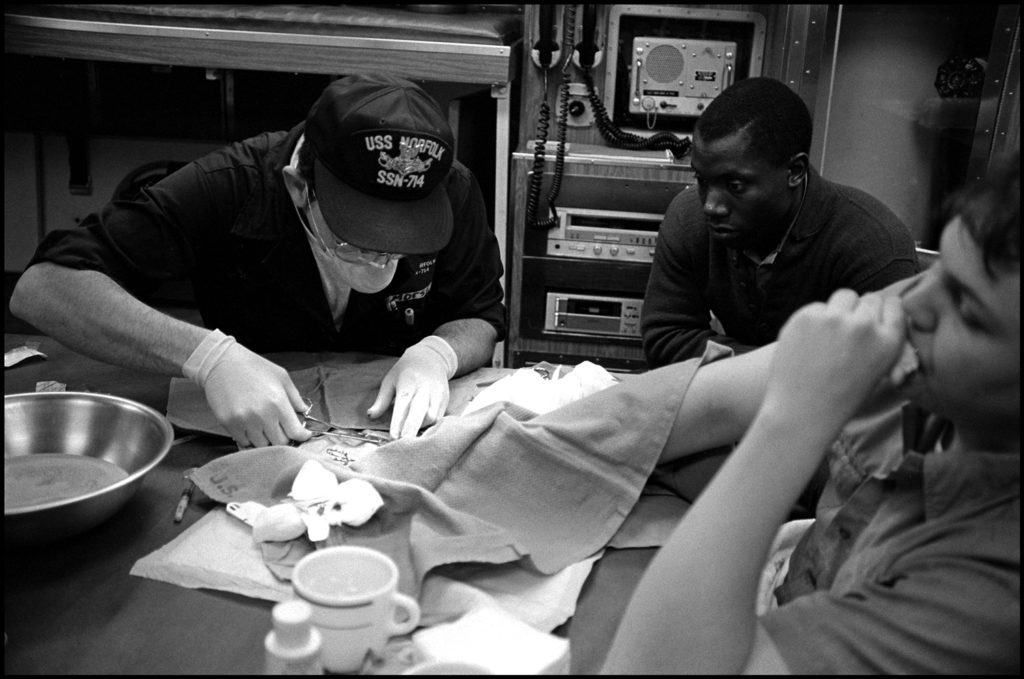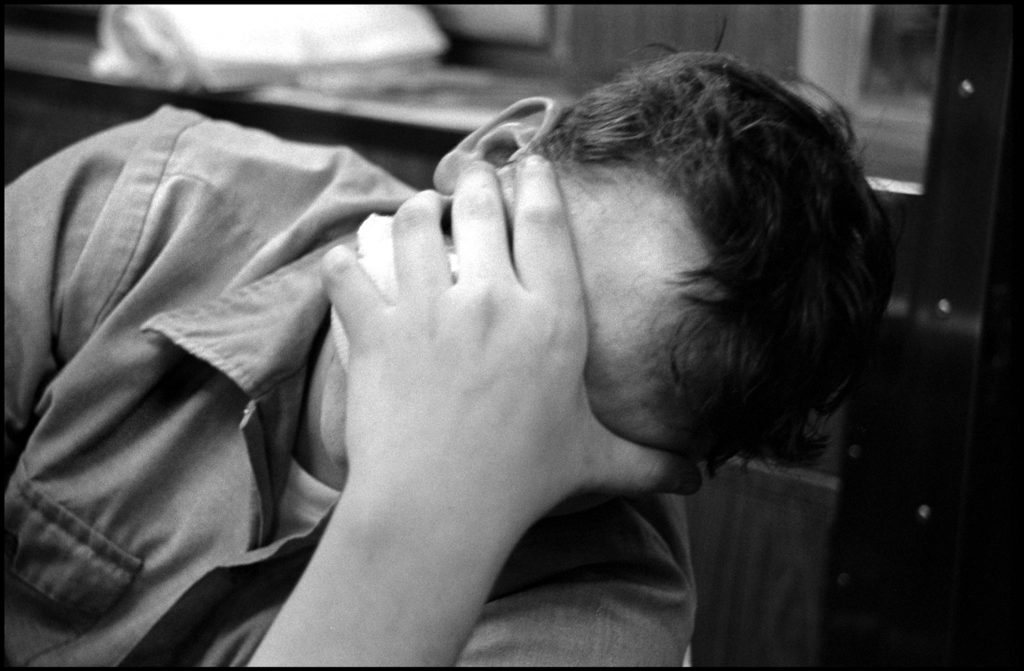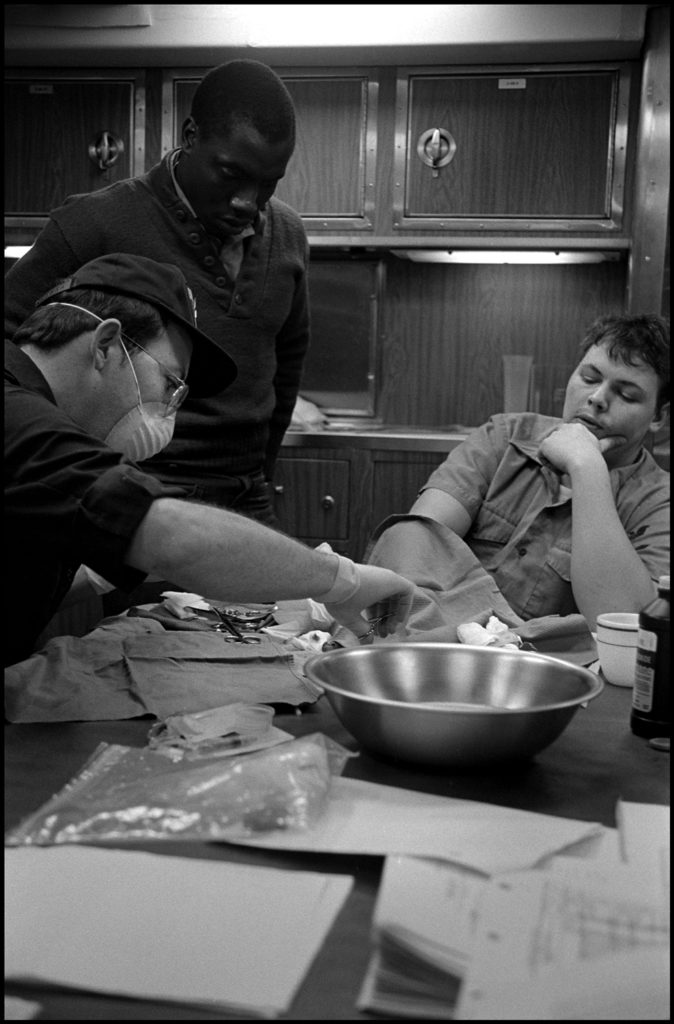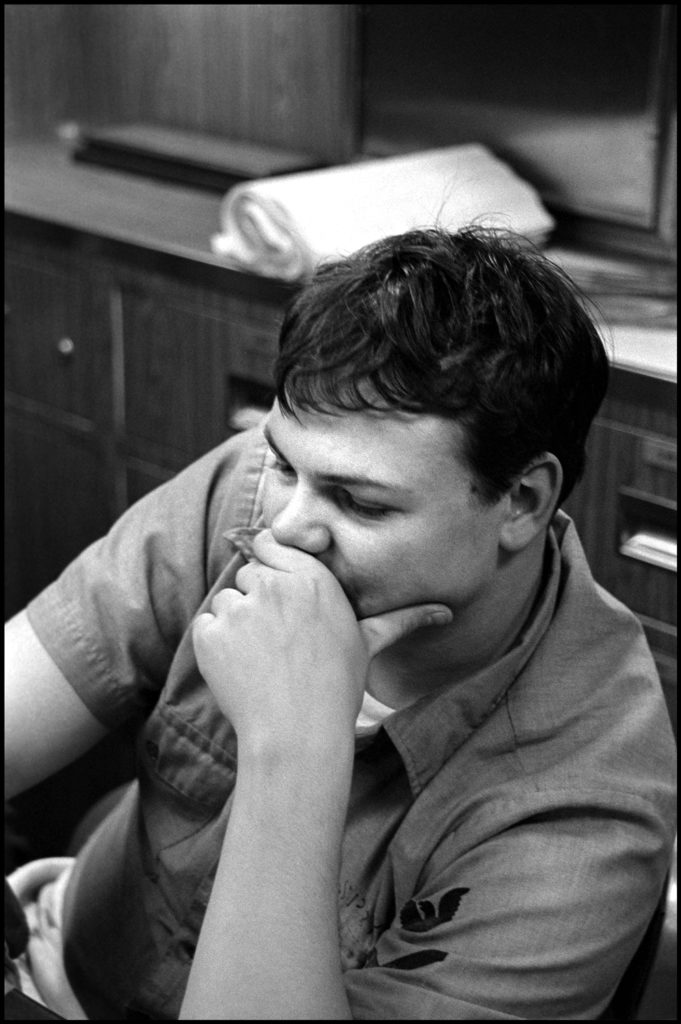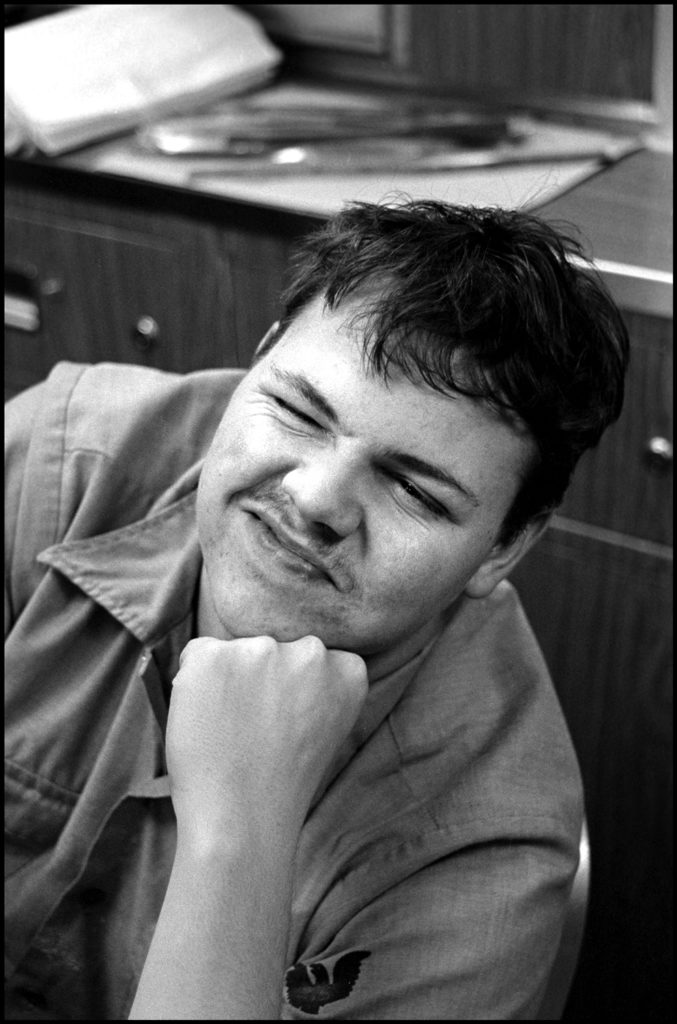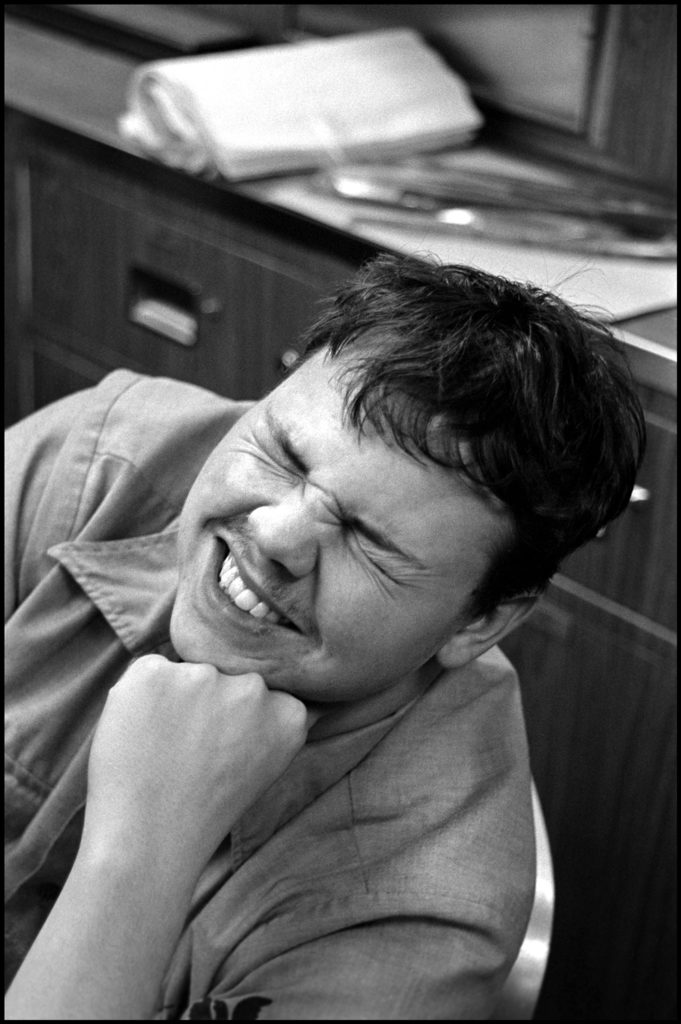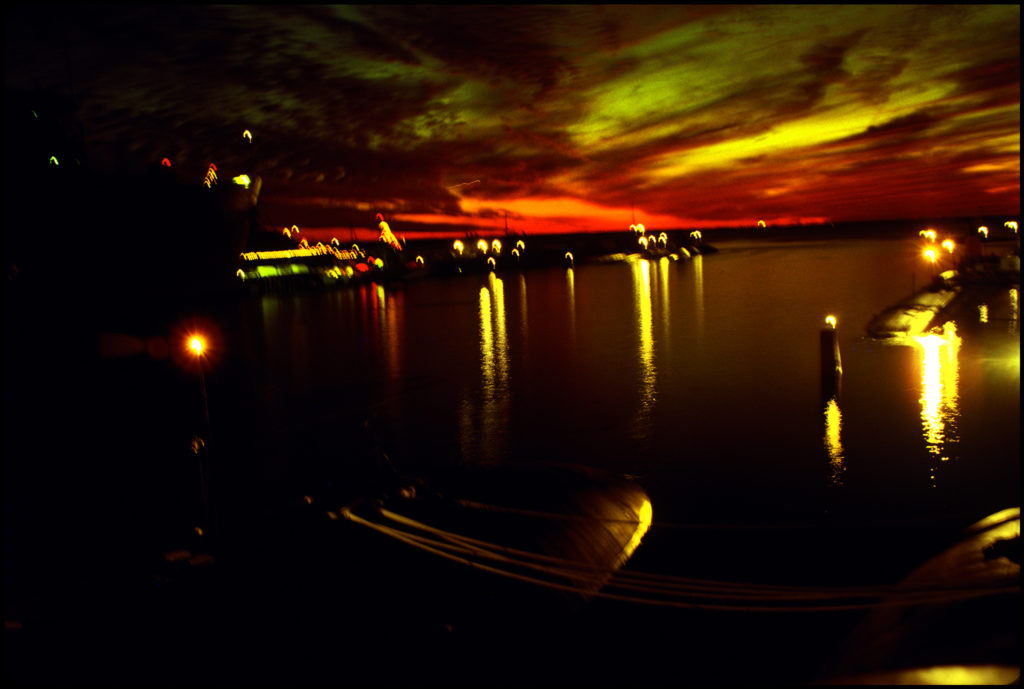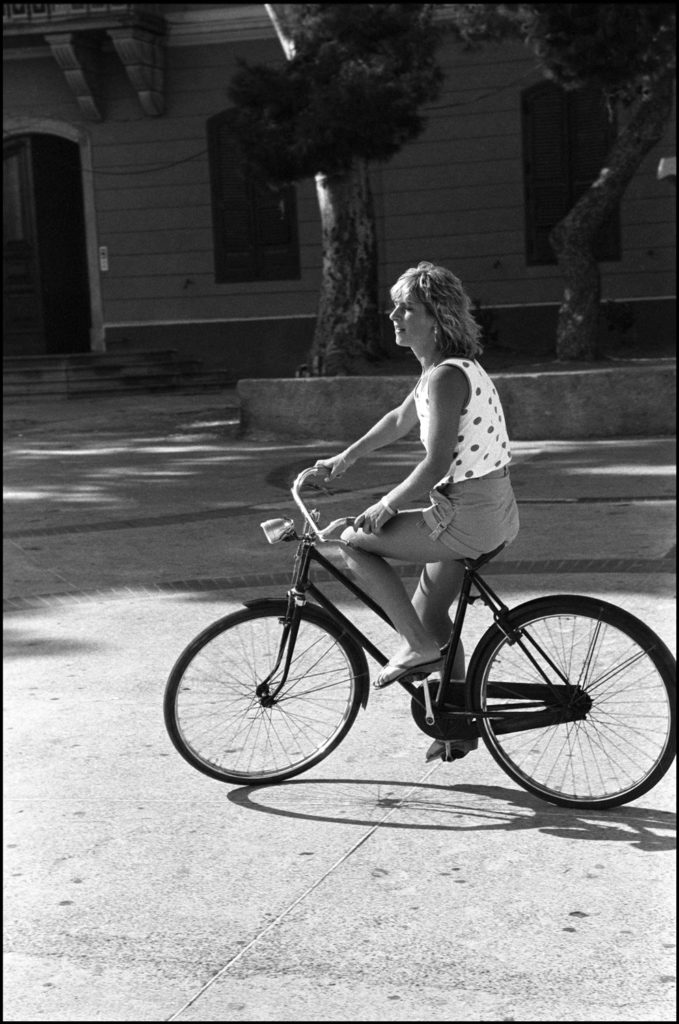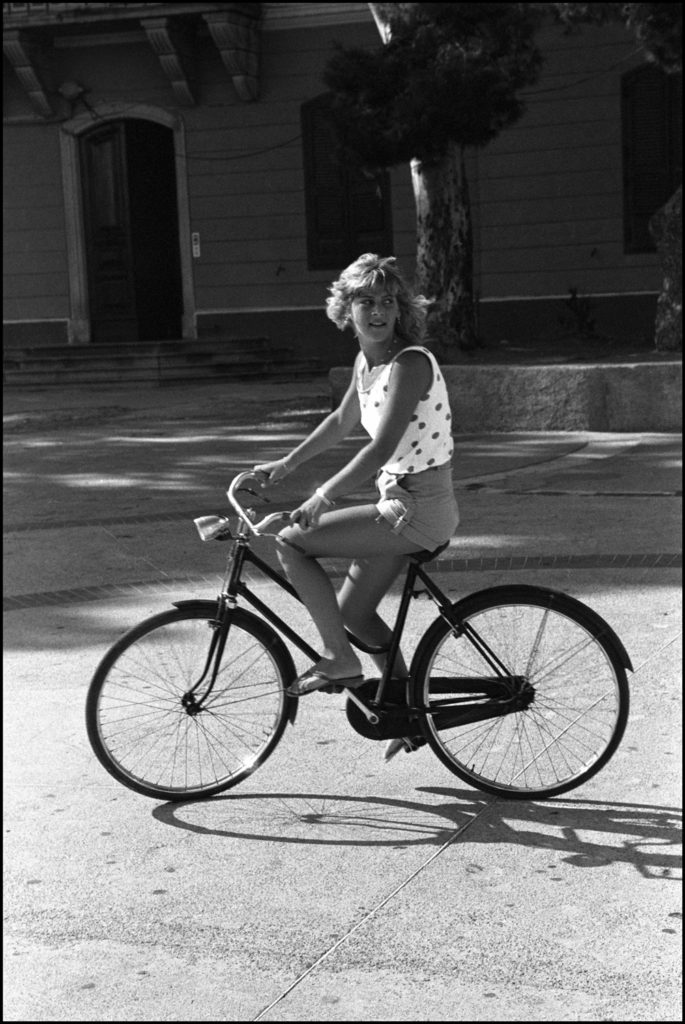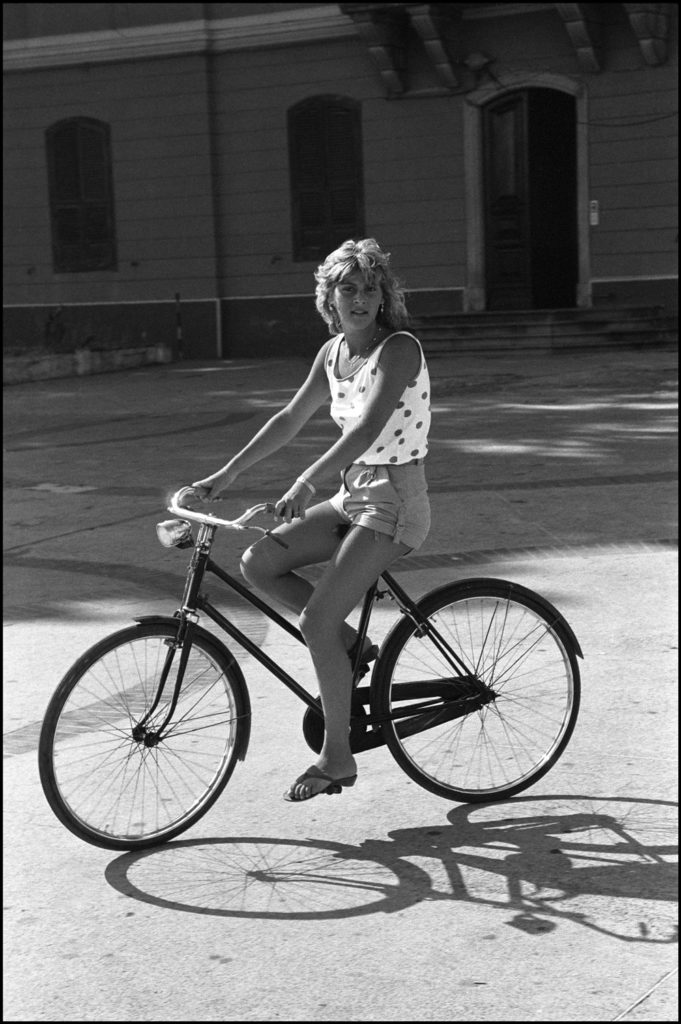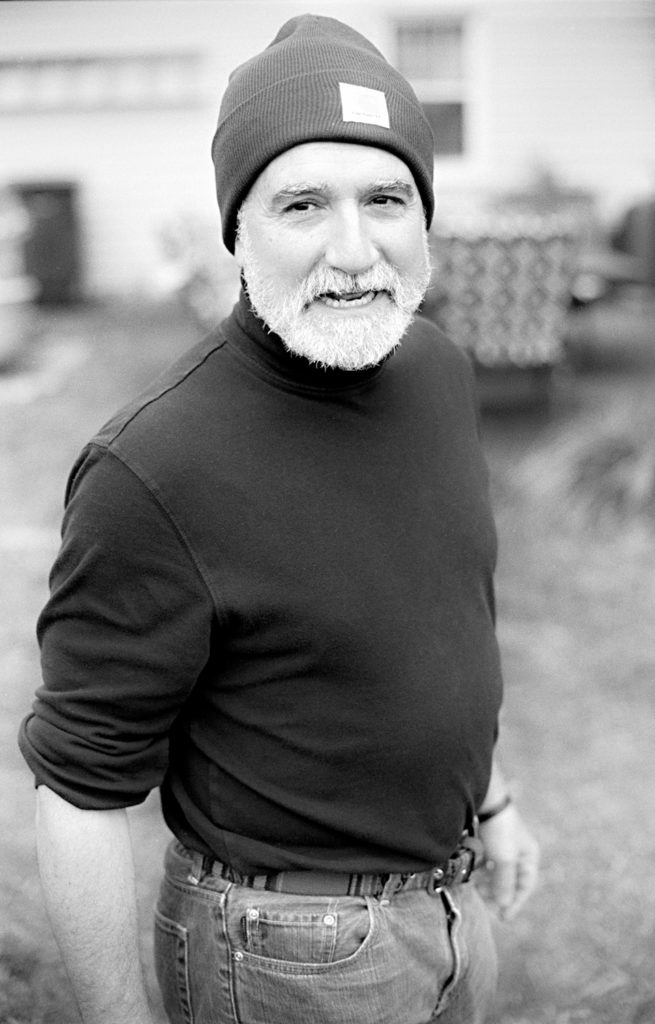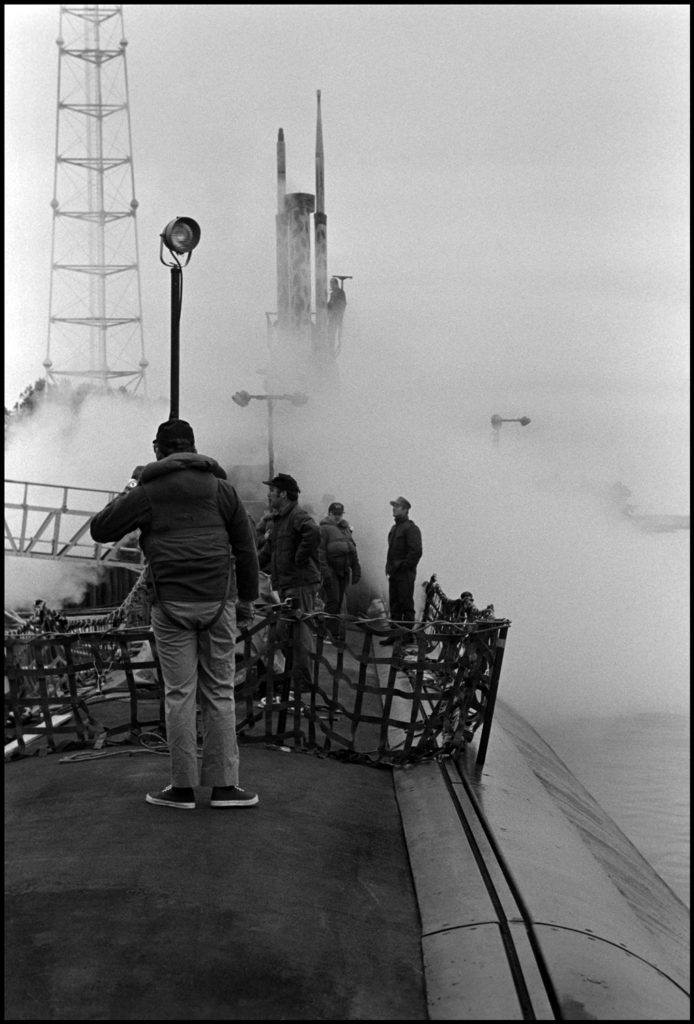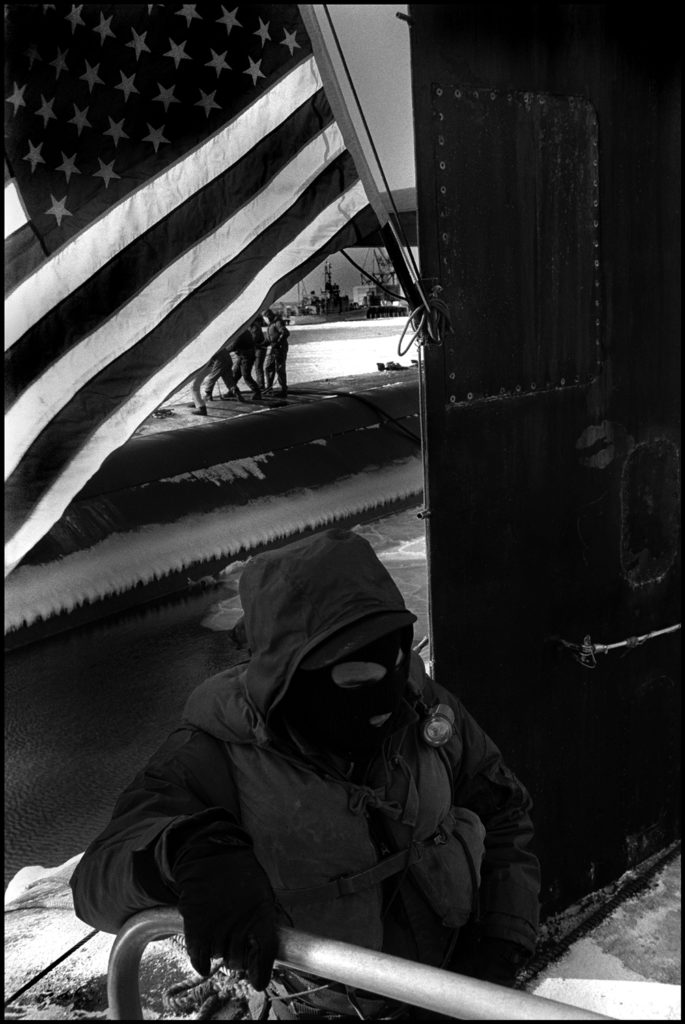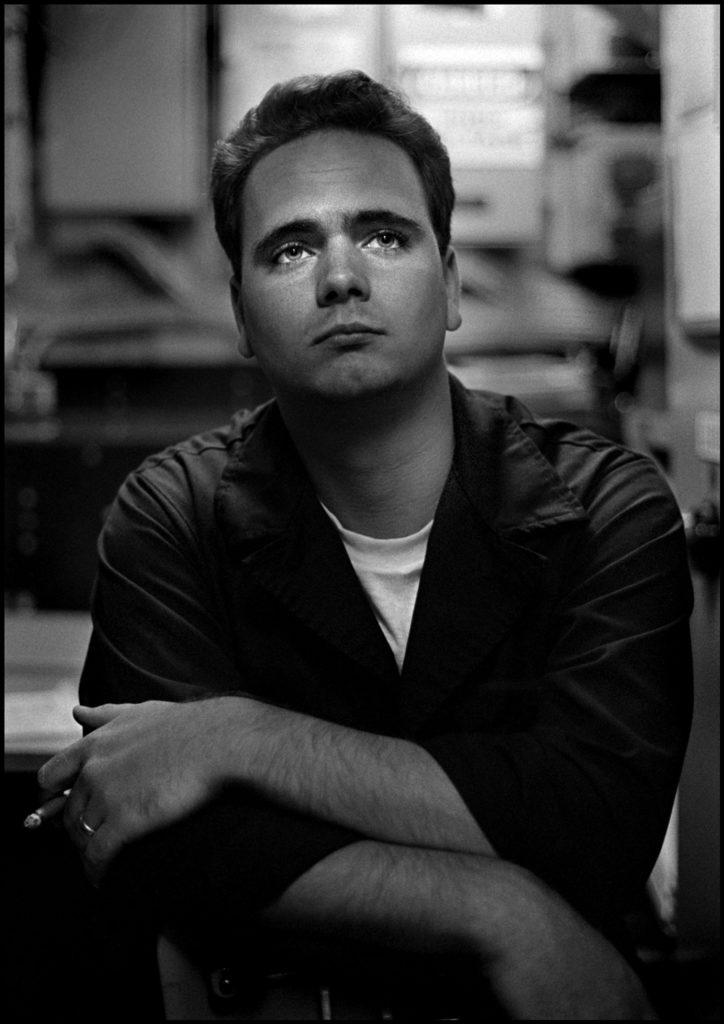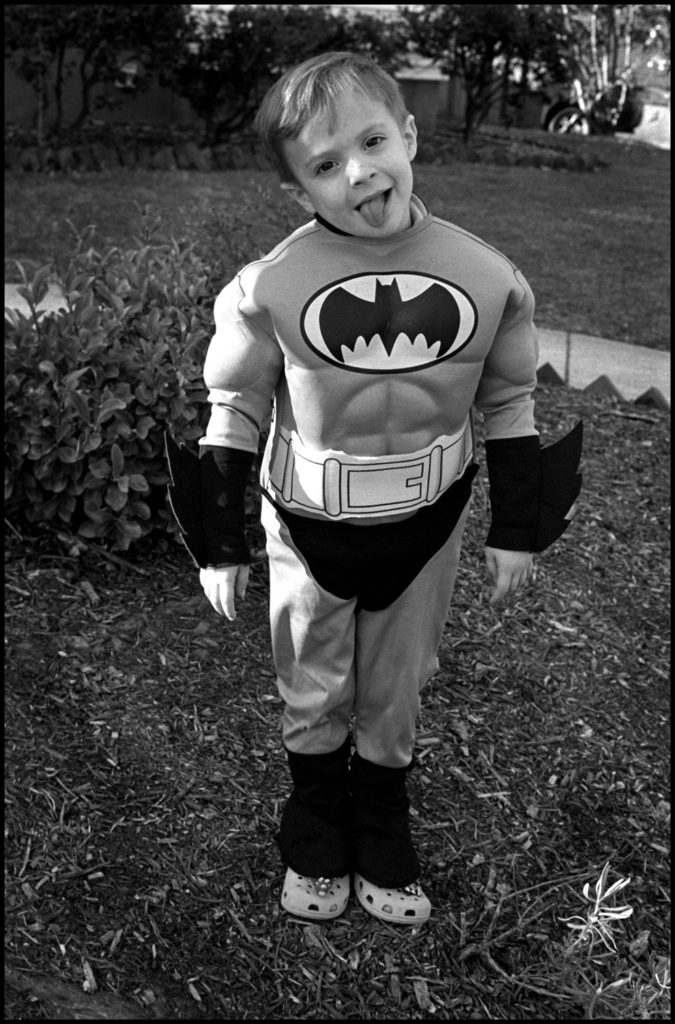Criteria
I’ve collected quite a few film cameras over the years, and I found it difficult to select my top five favorites. Having winnowed the field fairly quickly down to 8 semi-finalists, I applied the following criteria to pick the winners.
- I personally own one or more of each camera, either the exact model or some variant.
- Number of images taken with each.
- How often I used the camera in the past year.
- Ease of use and familiarity.
- Feelings the camera invokes within me and in others. For example, do people tend to approach me to talk about the camera when they see me using it in public.
5. Nikon FM2
I stepped back from photography in the mid ‘90s while I attended grad school, a period I refer to as my dark ages. I sold all my camera gear except my Nikon FM and the venerable Zoom-Nikkor 35-105mm, a dodgy lens by almost all standards yet one I hold in high esteem. I write nostalgically about this wonderful lens at length in this blog post: [ https://warrenworks.com/two-images-decades-apart-same-great-camera-and-lens/ ]
Over the Nikon FM, I prefer the Nikon FM2. Like the FM, the FM2 is a fully mechanical camera with several improvements, namely, a faster maximum shutter speed of 1/4000th of a second. It’s a rugged, dependable instrument and is one of the finest cameras Nikon ever produced. I especially like this camera because of its compact size. Yes, they make a motor winder for it, but I have never felt compelled to use it. I like the buttery smooth feel of the manual film advance and the reassuring sound of the shutter release and the mirror moment. It just feels put together, well made, wonderfully engineered.
It has an exposure meter, which requires batteries, but I never insert the batteries. Instead, if needs be, I use a handheld exposure meter, either the Gossen DigiSix, or a Pentax Spot Meter.
This camera is all about slowing things down and taking your time. What’s the rush? There’s no gunning it, no spraying the subject with the machine gun sound of a high-speed motor winder. With a little thought, planning, and measurement, you can obtain incredible images without wasting film. I’ve used this camera on a tripod more than any other camera I own.
It’s the camera I’d take with me on a trip into the jungle or into the artic. I’d take it anywhere I believe I’d be unable to find batteries or electricity. As long as you have film, you’re in business.
4. Leica M3
I was a late comer to Leica cameras. Like I explained earlier, I chose Nikon over Leica early in my photography career and I’ve been happy with my decision ever since, but when an opportunity came along to acquire a pristine Leica M3, I figured why not? I’m still happy with my Nikon gear, but I must admit, there’s something special about how a Leica camera using Leica glass renders an image on film. There’s more acutance, which comes from the rear of the lens being closer to the film plane due to the lack of a mirror. I still prefer an SLR to a rangefinder, but a well-tuned rangefinder lets you achieve very precise focusing, especially when shooting portraits and you want to focus on the eyes.
This particular M3 was made in 1962. I like the idea of making images using a camera that’s older than I am. After 58 years, It’s still going strong. And who would have guessed? Retro technology is the new cool thing! Like the Yashica Mat 124G, walking around in public with this camera around your neck attracts aficionados who admire and appreciate sleek design and precise engineering.
I prefer to use the Leica 50mm Summicron f2 Near-Focusing Range lens on this camera. It requires the use of goggles when in the near-focusing range to correct for parallax. The goggles lend an air of mystery to this already beautiful camera which magnifies its attraction quotient substantially. Someone who would ordinarily walk past an old camera in use is drawn to the goggle-equipped Leica M3 like a moth to a flame. You can learn more about this incredible lens in this blog post: [https://warrenworks.com/leica-m3-post-cla-shakedown/ ]
The best thing about the Leica M3 is that it’s 100% mechanical. It contains no batteries and no frills. If you want to take a picture, you’d better know your craft. In fact, I enjoy the mental exercise of manually calculating exposure, especially when using this camera. It sharpens the photographic eye.
Its manual film advance is easily operated with one hand. It has a leaf shutter, so it’s quieter than the Leica M10D. On a busy street, or in a quiet setting, no one knows you’ve taken a picture. It works in Aperture Priority mode, so in low light you get some wonderful, ethereal, blurry images.
It’s a rangefinder, but rarely, if ever, do I focus in this manner. Instead, I set the aperture to F8 and position the green dot on the hyperfocal distance scale opposite the black aperture indicator. This ensures everything between 1.8 meters to infinity will be in focus. Every lens has a hyperfocal distance. I highly recommend you take some time to study this important concept, especially if you’re interested in street photography. With the hyperfocal distance set, I aim the camera in the general direction of the subject, usually from hip level, and fire.
I hold the camera in my right hand with the carry strap wrapped around my wrist. I aim, shoot, and advance the film with one hand. I find shooting from the hip yields the most candid shots. The camera is down, out of the way, and inconspicuous. I find that when people see a camera their defenses go up. They become suspicious and sometimes hostile.
If I want to engage a subject on a more personal level, I will approach them and ask for their permission to take their photograph, like I did with this protester at a Women’s Rights March in Washington, DC.
2. Yashica Mat 124G
In 2006 digital cameras reached parity with film and professional photographers around the world started upgrading. This resulted in a glut of used medium format gear coming to market at good prices, so I bought a few. One of the gems I acquired early on was a nearly new Yashica Mat 124G. I took it on a trip to Amsterdam and I’ve been in love with it ever since.
This is a twin lens reflex (TLR) camera and it takes some getting used to. To take a picture, you flip open the top and peer down through the top to compose and focus the shot. From a distance it appears you’re hunched over a mysterious black box. People watching wonder what you are doing, and that’s what makes using this camera so much fun. Perfect strangers, driven by curiosity, approach and start a conversation. Were I to find myself stranded in a strange land with nothing but the clothes on my back and this camera, by the end of the day I could secure a hot meal and a place to stay.
I especially like to use this camera to capture images with a different point of view. By the very nature of its twin lens reflex design, one tends to shoot from their belly button, as opposed to a 35 mm SLR, which is most naturally employed at eye level. It’s easy to photograph subjects who are sitting without the need to squat down. Where this camera really shines is shooting at ground level without danger of getting your clothes dirty. I’ve made my best images of my animal friends with this camera.
The Yashica Mat 124G is not a high-end camera. Compared to a Rolleiflex 3.5F or the Mamiya C330 Professional, both heavy, solid cameras, the Yashica Mat 124G feels like a rattily tin can. Using an automobile analogy, the Yashica Mat 124G feels like a Yugoslavian compact car to the touch but performs like an uber engineered German touring sedan. Physically, construction-wise, one perceives loose tolerances, sloppy seconds, false hopes.
In reality, this camera shines in three key areas:
- It has one of the world’s finest lenses,
- It has a dead-on-accurate, built-in exposure meter, and
- It’s one tough mother of a camera.
There’s nothing frilly hanging off the sides of this machine to get destroyed when it’s accidentally dropped, say, when drinking beer and playing foosball at the Heineken Brewery in Amsterdam. It’s lighter, too, than a Rolleiflex 3.5F or the Mamiya C330 Professional, which makes it easy to carry around for an all-day shooting adventure. And you can buy one for a song, comparitavely speaking.
Well, a Yashica Mat 124G used to be a real bargain on eBay, but a quick glance at recent prices shows mint condition specimens listed for upwards of $800. These sellers are smokin’ crack. A used one in nice condition is listed for $285. eBay used to be a great place to buy used gear until they started charging tax on out-of-state purchases for flea-market items. I’ll save that rant for another video. A used Yashica Mat 124G in good condition between $125 – $250 is a good deal in my opinion.
I bought my first Nikon F3HP in 1984 when I was a young sailor assigned to the USS Norfolk, SSN 714, a Los Angeles class fast attack submarine. I wanted to take my photography to the next level and the two camera brands most closely associated with professional photographers in those days was Nikon and Leica.
Eventually, after some research, I narrowed the choice between the Nikon F3HP and the Leica M4-P. Unlike today, where professional grade digital cameras easily cost $5000 or more, and you feel like your arm is being twisted behind your back when you buy one, I recall that neither of these cameras were outrageously expensive, though the Leica did cost more than the Nikon.
Ultimately, I based my choice on my preference for looking through the lens of a single lens reflex (SLR) camera vs. using a range finder, and so I chose the Nikon. I’ve been a loyal Nikon user ever since.
The HP stands for High Eyepoint. Essentially, what makes a Nikon F3HP a High Eyepoint is the DE-3 finder, which allows you to see the entire viewfinder image while wearing glasses. This is a great feature, because in the ‘80s, I wore Ray-Ban sunglasses, so I could take pictures and look cool at the same time.
